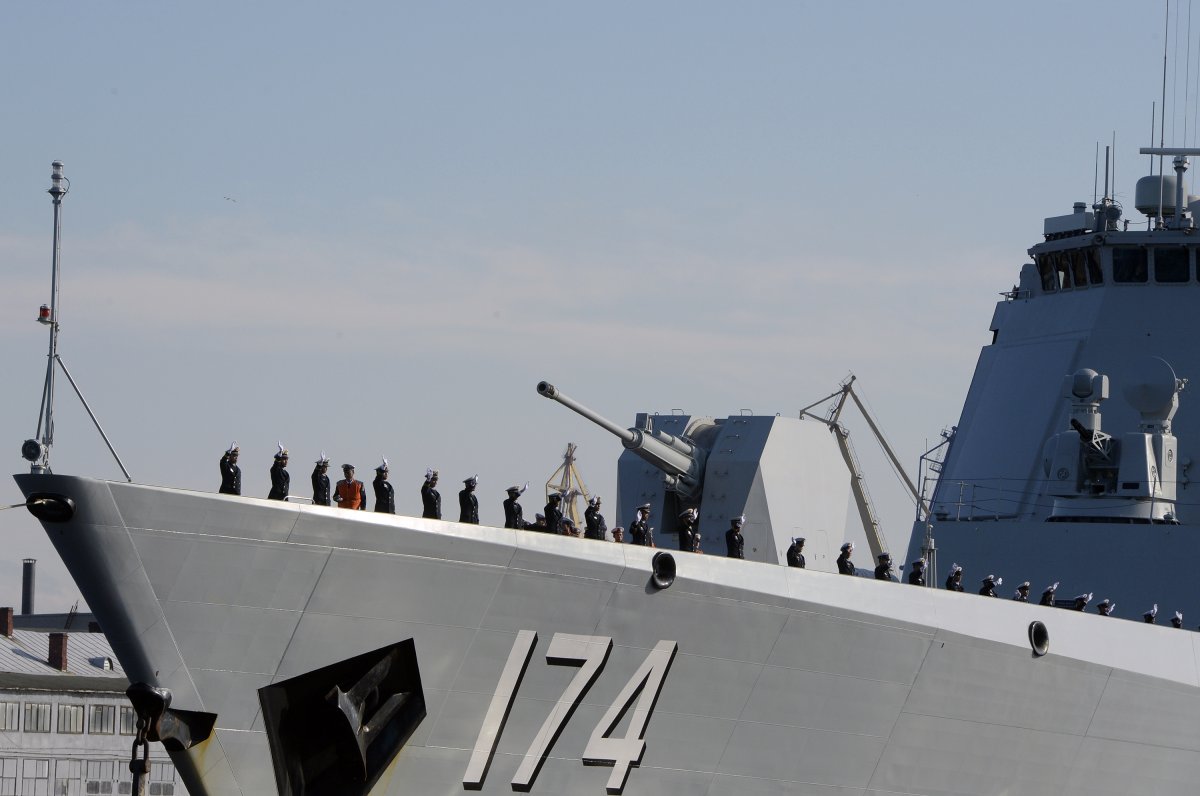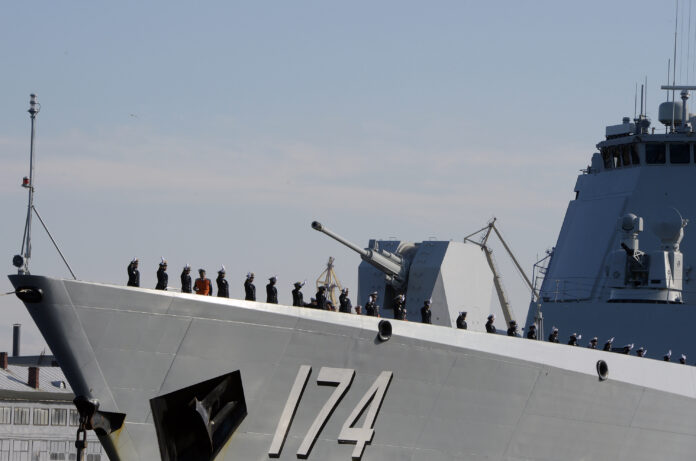New reports released on Monday by U.S. treaty ally Japan have shed light on the recent movements of Russian and Chinese warships in Asia’s crowded waterways.
Ship and aircraft crews were scrambled to shadow and gather intelligence on at least four vessels, which steamed in and out of the Western Pacific on March 23-25, according to the Joint Staff of Japan’s Self-Defense Forces.
Japan shares maritime borders with South Korea, another U.S. treaty ally, but is also neighbors with potential adversaries in Russia, China and North Korea. The Sea of Japan—known as the East Sea in the two Koreas—is home to Russia’s Pacific Fleet, and is also a missile testing ground for North Korean leader Kim Jong Un.
Chinese and Russian forces using the expansive waters of the Pacific must often cross Japan’s archipelagic territory in Northeast Asia, which is also where the so-called first island chain begins.
On Saturday, the Chinese navy’s Type 052C or Luyang II-class destroyer the Changchun and its Type 054A or Jiangkai II-class frigate the Changzhou were spotted 55 miles southwest of the Japanese island of Yokoate, later advancing eastward into the Pacific between Yokoate and the island of Amami Oshima, Tokyo’s Joint Staff reported.
The ships, both part of the East Sea Fleet of the Chinese military’s Eastern Theater Command, were monitored by P-1 and P-3C patrol planes of the Japan Maritime Self-Defense Force, according to the Japanese Defense Ministry.
The following day, Japanese forces detected Russian Pacific Fleet vessel the Rezkiy, a Project 20380 or Steregushchy-class corvette, 25 miles northeast of Japan’s main island of Honshu, before it sailed westward into the Sea of Japan via the narrow Tsugaru Strait, the Joint Staff said.
Tokyo said the Russian warship was shadowed by Sugashima-class minesweeper the JS Izushima as well as the minesweeper JS Enoshima, the lead ship of its class.
The Rezkiy was on maneuvers off Russia’s far eastern Kamchatka Peninsula and later returned to its home port in Vladivostok on Tuesday, the Russian Defense Ministry said in a short statement.
Japan Joint Staff
The previous day, Japan said it had dispatched the Abukuma-class destroyer escort JS Tone and scrambled a P-3C maritime patrol aircraft to watch the Mao Yisheng, a Type 636A or Shupang-class hydrographic survey ship in service with China’s navy, which was first spotted 25 miles south of Yonaguni, Japan’s westernmost inhabited island.
The Mao Yisheng, whose tasks include mapping the sea floor for Chinese submarines, later sailed west of the disputed Senkaku islets into the East China Sea, the Joint Staff said.
Last week, the Shupang-class research vessel Chen Jingrun also used the same waters when it entered the Western Pacific via Japan’s southwestern islands, a separate Joint Staff report said at the time.
Chinese and Russian naval forces in the Pacific have remained active in recent weeks ahead of likely joint exercises this summer. The annual maneuvers have expanded in recent years as Beijing and Moscow form a closer defense partnership.
Also on Monday, Russia’s Pacific Fleet said the Steregushchiy-class corvette Sovershennyy and the Project 1124M or Grisha III-class corvettes Metel and Koreets held anti-submarine drills in the Sea of Japan.
The mock enemy on the day was the Russian navy’s Project 636.3 or Improved Kilo II-class submarine Volkhov, which last week was shown test-firing a Kalibr cruise missile, according to a statement carried by Russia’s state news agency RIA Novosti.

OLGA MALTSEVA/AFP via Getty Images
Uncommon Knowledge
Newsweek is committed to challenging conventional wisdom and finding connections in the search for common ground.
Newsweek is committed to challenging conventional wisdom and finding connections in the search for common ground.


